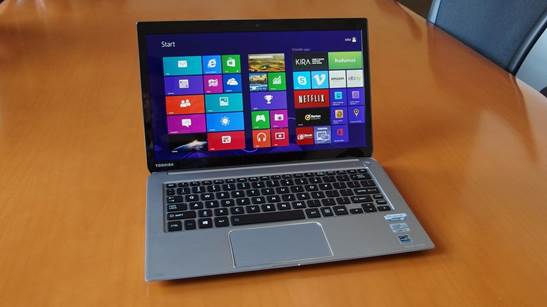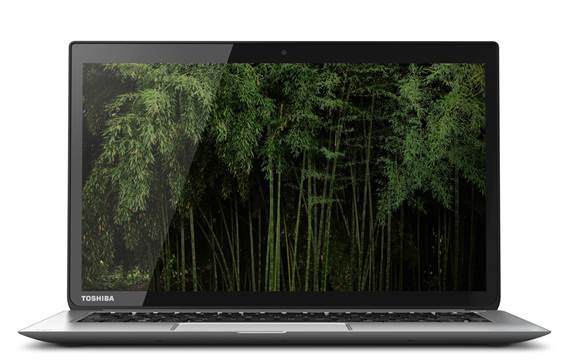Toshiba is not a new comer on the laptop filed
– it has been creating them for decades – but for some reason, American consumers
don’t seem to trust the company with the premium products. 400 USD, may be, but
for a laptop for designers? An Ultrabook, no less? It’s certain that Toshiba has
image issue, and the leaders in Tokyo know that. They hope, the answer is to
start refreshing with a white board. Recently the company released a new line
of premium products, which has the name Kira, with 13inch Kirabook is the initiative
product.
At a glance, it has all the decorations of
a premium laptop, with the all metal chassis, backlit keyboard, 8GB RAM, 2 year
warrant and 2,560x1,440 screen, a screen of which is sharp enough to compete
with Chromebook Pixel and Retina screen MacBook Pro. In fact, this is the first
Windows laptop providing such high resolution, giving Toshiba a huge
opportunity: to win those who haven’t found their perfect Ultrabook yet. Of
course, the problem with “perfect” is that it comes with a price: in this case
is from 1,600 USD and up, with the touch screen that is not even a standard.
That leaves a question: is it worth such price?

At
a glance, it has all the decorations of a premium laptop, with the all metal
chassis, backlit keyboard, 8GB RAM, 2 year warrant and 2,560x1,440 screen
Design and feeling
Whether Toshiba is successful in increasing
its reputation is not for us to predict – it’s just time (and laptop sales) will
show if the consumers believe in this brand more than they did in the past.
However, we will say this: Kirabook is generally an elegant designed laptop,
and it’s durable. A good place to begin many be magnesium material used on the
lid and the chassis, which Toshiba announced is 90% more powerful than aluminum
used on MacBook Air. Of course, we have no way to confirm that announcement,
but it’s clear that magnesium brings back all the benefits: lightweight,
anti-scratching, and it looks very valuable, in the way the metal laptops
usually do.

Kirabook
is generally an elegant designed laptop, and it’s durable.
On the inside, it takes advantages of the
honey-comb structure which is similar on the old Portege line of Toshiba, making
it extremely durable, especially in the palm area (you know, where you can hold
it with one hand). And though it’s give, we can reject how lightweight it
feels. With 2.9 pound, it weighs almost the same to 13 inch Air, and that’s
with the pre-attached touch screen. Without the touch screen, the weight
reduces to 2.6 pound, pretty lightweight – even for an Ultrabook. However,
regardless of small size, it still packs more ports than what you will find on
most of the ultraportable: an HDMI socket, card reader headphone jack and 3 USB
3.0 ports (painted black inside to have more sophisticated effect). The only
thing you lose is the Ethernet port, which you can only find on the thickest Ultrabooks.
So we have determined that this laptop is
nice, but is nit nice for a price of 1,600? Not much, but on the contrary,
there’re several things. We can make Toshiba rewind the design process and
reconsider some of its decision, but we will start by removing the striking chrome
edges surrounding trackpad, along with the Harman/Kardon brand on the right
corner of the palm rest (HP, we hope that you also read this). The front edge
may be uncomfortably pointy, especially when you hold it in your hands. Though
the frame is solid, the lid shows the disturbing curve. we also don’t want to
see any hunch or groove at the place the keyboard meets the chassis. The intake
fan on the underside is hidden from the visibility and as you will see, it
doesn’t even fulfill its tasks in controlling the temperature. At least Kirabook
has almost everything that an expensive laptop should have: metal frame,
thin-wedge shape, backlit keyboard, high-res, almost edge-to-edge glass screen.
But if you ask us, it’s not attractive enough to guaranntee for that
“powerhouse” price.

At
least Kirabook has almost everything that an expensive laptop should have:
metal frame, thin-wedge shape, backlit keyboard, high-res, almost edge-to-edge
glass screen.